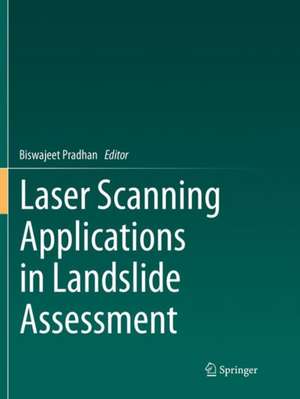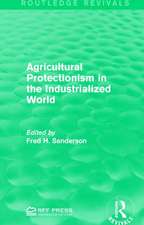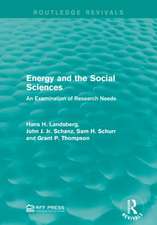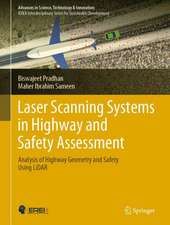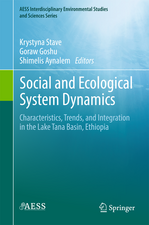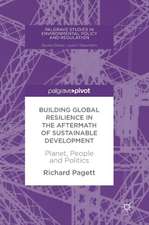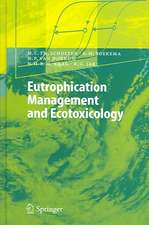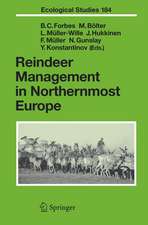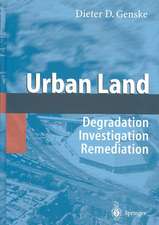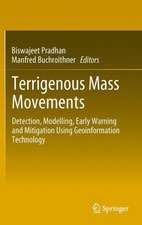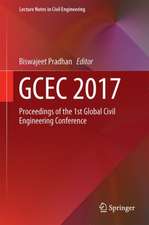Laser Scanning Applications in Landslide Assessment
Editat de Biswajeet Pradhanen Limba Engleză Paperback – 14 aug 2018
| Toate formatele și edițiile | Preț | Express |
|---|---|---|
| Paperback (1) | 808.16 lei 38-44 zile | |
| Springer International Publishing – 14 aug 2018 | 808.16 lei 38-44 zile | |
| Hardback (1) | 770.12 lei 38-44 zile | |
| Springer International Publishing – 17 mai 2017 | 770.12 lei 38-44 zile |
Preț: 808.16 lei
Preț vechi: 1063.38 lei
-24% Nou
Puncte Express: 1212
Preț estimativ în valută:
154.63€ • 161.47$ • 127.70£
154.63€ • 161.47$ • 127.70£
Carte tipărită la comandă
Livrare economică 11-17 aprilie
Preluare comenzi: 021 569.72.76
Specificații
ISBN-13: 9783319856339
ISBN-10: 3319856332
Pagini: 359
Ilustrații: XVIII, 359 p. 197 illus., 186 illus. in color.
Dimensiuni: 210 x 279 mm
Ediția:Softcover reprint of the original 1st ed. 2017
Editura: Springer International Publishing
Colecția Springer
Locul publicării:Cham, Switzerland
ISBN-10: 3319856332
Pagini: 359
Ilustrații: XVIII, 359 p. 197 illus., 186 illus. in color.
Dimensiuni: 210 x 279 mm
Ediția:Softcover reprint of the original 1st ed. 2017
Editura: Springer International Publishing
Colecția Springer
Locul publicării:Cham, Switzerland
Cuprins
Introduction: use of LiDAR in landslide studies.- A supervised object-based detection of landslides and man-made slopes.- Landslide Characteristics Detection using supervised classification approaches.- Identification of Debris Flow Sources in Tropical Rainforest.- Landslide susceptibility modelling: optimization and factor effect analysis.- Spatial resolution effects of digital elevation models and their products on landslide susceptibility assessment.- Spatial prediction of landslide-prone areas through k-nearest neighbor algorithm and logistic regression model.- LIDAR derived DEM to produce landslide susceptibility with integration of Logistic regression.- Multi-scenario landslide hazard assessment using airborne laser scanning data.- Landslide vulnerability and risk assessment for multi-hazard scenarios.- Debris flow susceptibility assessment.- LiDAR Techniques in Rockall Hazard Assessment.- Rockfall Hazard Assessment
in Tropical Region.Notă biografică
Prof. Dr. Biswajeet Pradhan (University Putra Malaysia, Malaysia)
Dr. Pradhan received the B.Sc. degree with honors from Berhampur University (India), the M.Sc. degree from the Indian Institute of Technology (IIT) in Bombay (India), and the M.Tech. degree in Civil Engineering from the IIT in Kanpur (India) and Dresden University of Technology (Germany). He received the Ph.D. degree in GIS and Geomatics Engineering from the University Putra Malaysia. From 2008 to 2010 he was a recipient of the Alexander von Humboldt Research Fellowship from Germany. In 2011, he received his Habilitation in Remote Sensing from Dresden University of Technology (Germany). Since March 2015, he is serving as the Humboldt Ambassador Scientist for the Alexander Von Humboldt Foundation (Germany). Dr. Pradhan is also the recipient of the prestigious German Academic Exchange Research (DAAD) Fellowship Award, Saxony State Fellowship from 1999 to 2002, Keith Atherton Research Award, and Georg Forster Research Award from German Government. He is currently Faculty Member of Dept. of Civil Engineering, University Putra Malaysia. He has more than sixteen years of teaching, research, consultancy and industrial experience. Out of his more than 350 articles, more than 245 have been published in science citation index (SCI/SCIE) technical journals. He has written two books in GIS data compression and disaster management and edited three volumes, and written 12 book chapters. He specializes in Remote Sensing, GIS application, and soft computing techniques in natural hazard and environmental problems. His published work has been widely cited by his peers with more than 4800 citations in SCOPUS database. His H-index is 41. He has completed 20 research projects. Dr. Pradhan is a member of many professional bodies such as Committee of Space Research (COSPAR), Senior Member of IEEE, United Nations Outer Space Research Programme (UNOOSA) and many more. He sits as board member of many national programs in Malaysia and South-East Asia. He is a regular reviewer for many international bodies alike Dutch Research Council, European Science Foundation, Austrian Science Foundation, Research Council UK (RCUK) and many more. He has been also active with teaching and supervising of many Ph.D., MSc. and undergraduate students. Dr. Pradhan has widely travelled abroad visiting more than 55 countries to present his research findings. Countries involved are Germany, USA, Netherlands, UK, Switzerland, Turkey, South Korea, Japan, Indonesia, Thailand and many more. In 2013 Dr. Pradhan joined the AJGS as an Associate Editor responsible for evaluating submissions in the fields of Environmental, Geo-Informatics and Geotechnical Sciences.
Dr. Pradhan received the B.Sc. degree with honors from Berhampur University (India), the M.Sc. degree from the Indian Institute of Technology (IIT) in Bombay (India), and the M.Tech. degree in Civil Engineering from the IIT in Kanpur (India) and Dresden University of Technology (Germany). He received the Ph.D. degree in GIS and Geomatics Engineering from the University Putra Malaysia. From 2008 to 2010 he was a recipient of the Alexander von Humboldt Research Fellowship from Germany. In 2011, he received his Habilitation in Remote Sensing from Dresden University of Technology (Germany). Since March 2015, he is serving as the Humboldt Ambassador Scientist for the Alexander Von Humboldt Foundation (Germany). Dr. Pradhan is also the recipient of the prestigious German Academic Exchange Research (DAAD) Fellowship Award, Saxony State Fellowship from 1999 to 2002, Keith Atherton Research Award, and Georg Forster Research Award from German Government. He is currently Faculty Member of Dept. of Civil Engineering, University Putra Malaysia. He has more than sixteen years of teaching, research, consultancy and industrial experience. Out of his more than 350 articles, more than 245 have been published in science citation index (SCI/SCIE) technical journals. He has written two books in GIS data compression and disaster management and edited three volumes, and written 12 book chapters. He specializes in Remote Sensing, GIS application, and soft computing techniques in natural hazard and environmental problems. His published work has been widely cited by his peers with more than 4800 citations in SCOPUS database. His H-index is 41. He has completed 20 research projects. Dr. Pradhan is a member of many professional bodies such as Committee of Space Research (COSPAR), Senior Member of IEEE, United Nations Outer Space Research Programme (UNOOSA) and many more. He sits as board member of many national programs in Malaysia and South-East Asia. He is a regular reviewer for many international bodies alike Dutch Research Council, European Science Foundation, Austrian Science Foundation, Research Council UK (RCUK) and many more. He has been also active with teaching and supervising of many Ph.D., MSc. and undergraduate students. Dr. Pradhan has widely travelled abroad visiting more than 55 countries to present his research findings. Countries involved are Germany, USA, Netherlands, UK, Switzerland, Turkey, South Korea, Japan, Indonesia, Thailand and many more. In 2013 Dr. Pradhan joined the AJGS as an Associate Editor responsible for evaluating submissions in the fields of Environmental, Geo-Informatics and Geotechnical Sciences.
Textul de pe ultima copertă
This book is related to various applications of laser scanning in landslide assessment. Landslide detection approaches, susceptibility, hazard, vulnerability assessment and various modeling techniques are presented. Optimization of landslide conditioning parameters and use of heuristic, statistical, data mining approaches, their advantages and their relationship with landslide risk assessment are discussed in detail. The book contains scanning data in tropical forests; its indicators, assessment, modeling and implementation. Additionally, debris flow modeling and analysis including source of debris flow identification and rockfall hazard assessment are also presented.
Caracteristici
Details a comprehensive landslide detection assessment process, involving various types of latest classification approaches and techniques Presents a new concept regarding landslide hazard, prediction and risk assessment Provides detailed information about rockfall hazard assessment Explains in detail various statistical-based, data mining based etc. modeling approaches regarding landslide susceptibility assessment and debris flow modeling Shows source of debris flow indentification using very high resolution airborne laser scanning data and detail debris flow modeling including run out distance analysis Includes supplementary material: sn.pub/extras
